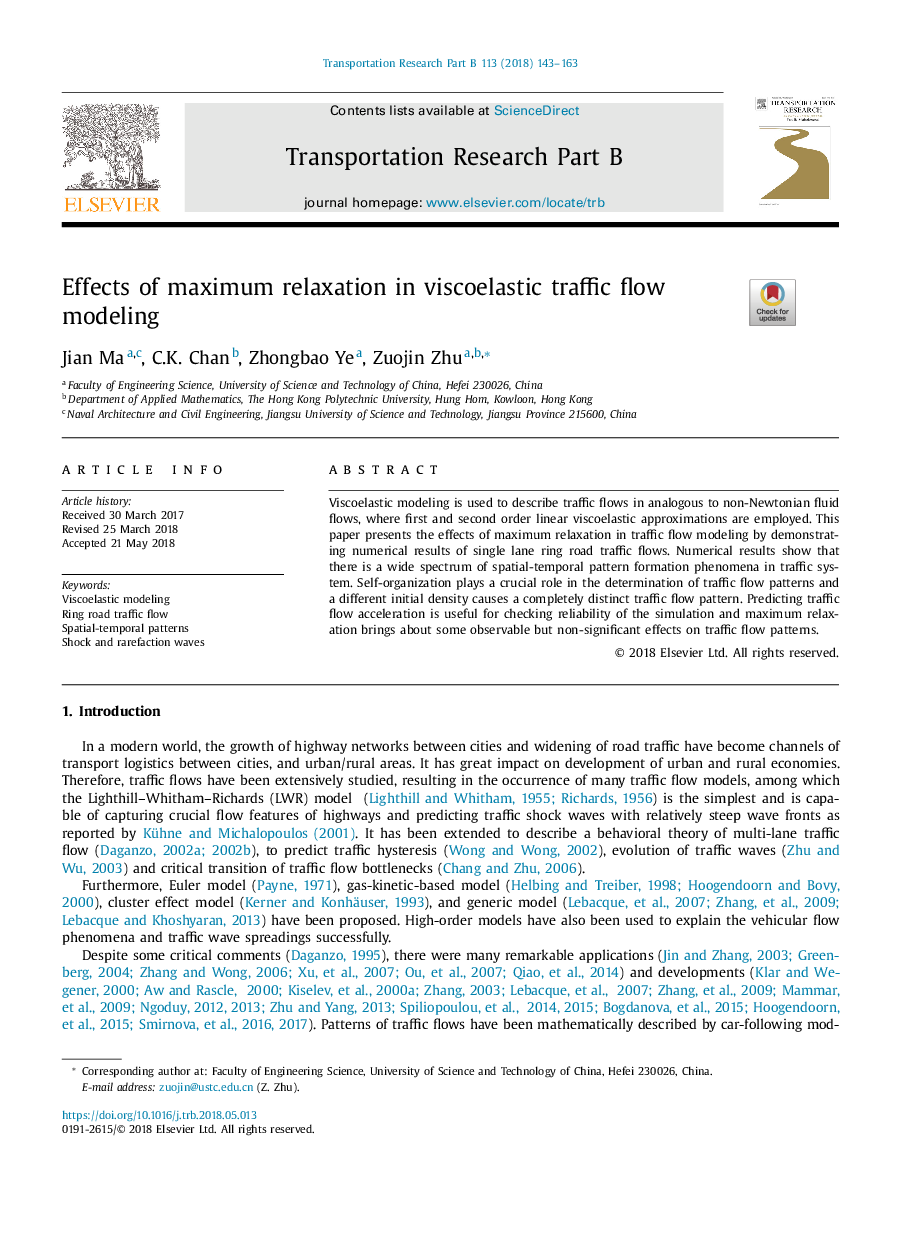| Article ID | Journal | Published Year | Pages | File Type |
|---|---|---|---|---|
| 7538993 | Transportation Research Part B: Methodological | 2018 | 21 Pages |
Abstract
Viscoelastic modeling is used to describe traffic flows in analogous to non-Newtonian fluid flows, where first and second order linear viscoelastic approximations are employed. This paper presents the effects of maximum relaxation in traffic flow modeling by demonstrating numerical results of single lane ring road traffic flows. Numerical results show that there is a wide spectrum of spatial-temporal pattern formation phenomena in traffic system. Self-organization plays a crucial role in the determination of traffic flow patterns and a different initial density causes a completely distinct traffic flow pattern. Predicting traffic flow acceleration is useful for checking reliability of the simulation and maximum relaxation brings about some observable but non-significant effects on traffic flow patterns.
Keywords
Related Topics
Social Sciences and Humanities
Decision Sciences
Management Science and Operations Research
Authors
Jian Ma, C.K. Chan, Zhongbao Ye, Zuojin Zhu,
